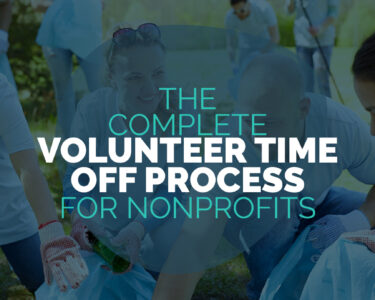Recently, I used AI to review a contract for a new client engagement. What started as a “quick” review turned into a 10-plus hour project.
Instead of asking AI to just “review this contract,” I developed a comprehensive legal analysis prompt to explain each section in plain language, identify risks and gaps, analyze scenarios, and draft revised provisions with detailed explanations. For all 26 sections.
I pushed back when I disagreed and iterated until I understood the tradeoffs. By the end, I had agency over every clause. The language that remained wasn’t just a default I’d accepted, but choices I’d made intentionally. I’d gained a more robust agreement, deeper understanding, and significantly more peace of mind.
I didn’t save any time. But the next time I reviewed a contract, I needed AI far less because I’d built genuine understanding.
This experience reveals why focusing narrowly on AI efficiency limits us. CEP’s recent “AI with Purpose” report shows that 78 percent of foundations and 63 percent of nonprofits are using AI for internal productivity, with similarly high rates for communications (70 percent and 84 percent respectively). Yet 62 percent of foundation leaders and 56 percent of nonprofit leaders remain uncertain about how best to use it. This widespread uncertainty — even among current users — suggests we’re barely scratching the surface of what AI can enable for nonprofits.
The Efficiency Lens and Its Limitations
The productivity focus makes sense. The sector is perpetually resource-constrained, and the promise of doing more with less is compelling. Efficiency gains are real and valuable. There’s nothing wrong with using AI to work faster, especially if staff are overburdened and stressed.
The issue emerges when efficiency becomes the primary lens. When funders and nonprofits focus exclusively on “how can we do this faster?” they run the risk of inadvertently constraining their thinking. They optimize within their current operating model rather than exploring what new approaches AI might enable. The strategic question of “What’s now possible with AI?” is pushed further out.
The risk goes beyond constrained thinking. When organizations feel pressure to demonstrate quick productivity gains, they may delegate critical thinking to AI rather than using it to enhance their own thinking.
Nonprofits are right to be concerned. CEP’s research shows 73 percent of nonprofit leaders cite misinformation or inaccurate results as their primary AI-related concern, while 58 percent report lack of staff expertise as a barrier to adoption.
The cognitive offloading risk is particularly insidious because AI outputs sound so articulate. Picture a program officer who submits an AI-generated grant report without catching that AI mixed up facts from another report. Or a data analyst who doesn’t question AI’s methodology in evaluation results. In more complex scenarios — like when AI agents autonomously research and synthesize information — errors can compound invisibly, each flawed assumption building on the last.
Here’s the deeper issue: optimizing for efficiency forces us to spend our attention on verification rather than imagination. When checking AI becomes our primary concern, we miss how it could enable fundamentally different approaches to serving communities, not just faster versions of the same work.
Three Catalytic Investments for Philanthropy
Moving beyond the productivity lens requires three interconnected investments that help us progress from efficiency to quality to innovation to impact.
The progression shifts our questions from “How do we do this more efficiently?” to “How do we do this better?” to “What can we do differently with AI?” to “What becomes possible?”
Investment 1: Grantee AI Fluency
AI fluency is the foundation. Without it, organizations risk the very problems funders fear most — misinformation, quality erosion, and inequitable outcomes. With it, they can use AI strategically to multiply impact.
Here’s what fluency actually means. It’s not about becoming technologists. It’s about building four interconnected capabilities:
- Technical skills: Knowing how to communicate clearly with AI, understanding its limitations, and recognizing when you’re pursuing impossible tasks. Like learning any new tool, this requires practice and good instruction.
- Strategic navigation: Understanding when AI use introduces more risk. The most effective approach isn’t to use AI as a shortcut, but as a strategic partner. This means knowing when to provide comprehensive context versus when to start from scratch — and recognizing that AI works best when paired with human expertise.
- Critical thinking: This is perhaps most crucial. AI outputs always sound articulate, but that doesn’t make them accurate. Fluent users develop the discipline to critique outputs rather than accept them at face value. A key principle: Don’t delegate critical thinking to AI. Use AI to critique your thinking so you can think more critically.
- Ethical judgment: Understanding algorithmic bias, protecting data security and privacy, and knowing what AI shouldn’t replace: lived experience, authentic relationships, and nuanced community understanding. This is where nonprofit values and AI practice must align.
For funders, this means: Support training that integrates risk awareness from day one — not as an afterthought. Look for programs that are sector-specific, use real nonprofit scenarios, and emphasize critical evaluation of outputs over speed of adoption.
Investment 2: Values-Aligned AI Tools for Grantees
Tool selection matters. When nonprofits use AI systems built without equity or privacy considerations, they can inadvertently perpetuate bias or compromise community trust — even with the best intentions.
Values-aligned tools demonstrate transparency in how they work, strong data privacy and security protections, meaningful bias mitigation efforts, and accessibility considerations. These aren’t just features — they’re where ethics get baked into the technology before anyone even starts using it.
CEP’s research found that 85 percent of nonprofits aren’t participating in activities to advance equitable AI. Part of this gap likely stems from simply not knowing how or where to start. Tool choice offers a concrete first step.
Many team subscriptions to quality AI platforms cost only $25 per month per user — an investment most nonprofits should consider making themselves. For funders, the role is providing general operating or unrestricted support that gives grantees this flexibility. When you trust grantees to choose tools aligned with their values and needs, you signal permission to experiment.
Even better, pair that flexibility with the training mentioned in investment one. Help grantees evaluate tools not just on features, but on how those tools handle bias, protect privacy, and align with their mission. This is where fluency and tool selection reinforce each other.
With the right tools and the fluency to use them well, organizations are ready for the third investment: experimentation.
Investment 3: Pilot Projects That Advance Sector Learning
Innovation requires space to explore, iterate, and sometimes fail. This is how breakthrough applications emerge.
Frame these as learning investments, not just performance grants. Even experiments that don’t deliver expected results generate valuable knowledge. When one nonprofit discovers what works (or doesn’t) with AI, others can build on those insights rather than repeating the same trial and error.
For funders, this means: Structure pilot grants with clear learning objectives and dedicated resources for exploration. Give explicit permission to try new approaches rather than just optimize existing ones. Create low-friction opportunities for grantees to share insights — convenings, peer networks, brief case studies — without adding reporting burden.
Be appropriately cautious about AI hype and inflated promises. But don’t let caution prevent all experimentation. The difference between reckless experimentation and strategic innovation is the foundation: organizations with AI fluency and values-aligned tools partnered with trusted domain experts are equipped to experiment responsibly.
Consider Digital Green, a nonprofit that’s worked with small-scale farmers globally for 15 years. With sustained philanthropic support for innovation, they developed Farmer.CHAT, an AI agriculture assistant that delivers personalized advice in local languages via WhatsApp. Service delivery costs dropped from $35 per farmer to $0.35 — while expanding reach and enabling capabilities like real-time climate-smart guidance that weren’t possible before. This kind of transformative innovation doesn’t happen overnight. It requires domain and technical fluency, sustained funding to iterate and fail forward, and patience for the journey beyond efficiency to transformation.
The Progression That Enables Innovation
The three investments I’ve described work together: fluency enables quality improvements, quality builds confidence, and confidence enables strategic innovation. Organizations that try to jump straight to innovation without this foundation face the very risks that justify caution — misinformation, compounding errors, quality erosion, and, vitally, loss of trust.
CEP’s research shows that more than 90 percent of both funders and nonprofits want to increase AI use, yet most remain uncertain how — the three investments above offer a clear path through that uncertainty.
When AI disrupts the communities nonprofits serve, organizations need to anticipate change, not just react to it. That kind of strategic thinking requires the fluency foundation these investments provide.
The Path Forward
The current reality is that 90 percent of foundations provide no AI implementation support, and fewer than 20 percent engage grantees in conversations about AI. The gap between stated interest and actual investment is stark.
For funders ready to close that gap: Build your own fluency to have productive conversations. Make these investments in your grantees. Measure success in capability and learning, not just efficiency. Enable grantees to imagine new possibilities.
AI fluency doesn’t require becoming technologists. It requires understanding how AI impacts the communities we serve and investing accordingly. The scaled impact and innovation funders want becomes possible when we expand beyond productivity-focused thinking.
The question for both funders and nonprofits isn’t whether to engage with AI — it’s whether to do so strategically or reactively.
Albert Chen is the CEO of Anago and an AI strategist, educator, and prompt engineer who helps organizations transform the way they operate and solve problems with AI.
👇Follow more 👇
👉 bdphone.com
👉 ultractivation.com
👉 trainingreferral.com
👉 shaplafood.com
👉 bangladeshi.help
👉 www.forexdhaka.com
👉 uncommunication.com
👉 ultra-sim.com
👉 forexdhaka.com
👉 ultrafxfund.com
👉 bdphoneonline.com
👉 dailyadvice.us




